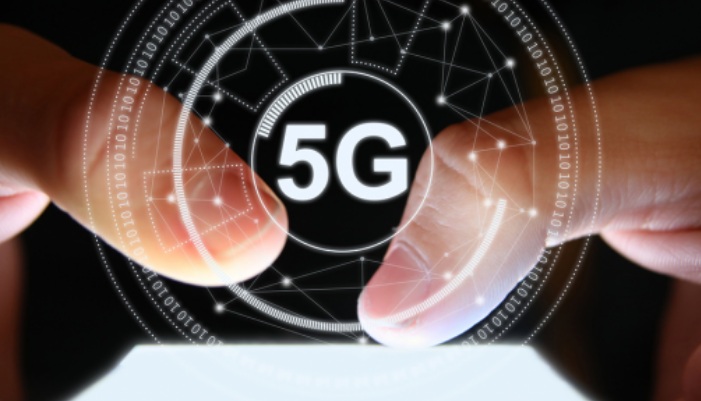COVID-19 has reshaped consumer behaviours and habits. People now rely on digital solutions to go on with their lives. Working and entertainment primarily happen virtually. Companies have had to adapt and provide a more digital experience to customers and employees. Looking ahead, uncertainties will continue, with changing restrictions and concerns around a second wave of infection. In this environment, how can businesses ensure they remain resilient and agile enough to respond to the challenges ahead?
5G adoption will be a key driver of future business success
A new report from Nokia and Nokia Bell Labs, ‘The 5G Business Readiness Report’, has examined the outlook for enterprise technology and 5G investment in the wake of the pandemic. It found that 5G-enabled industries had the potential to help drive sustainable economic growth and define the next decade of innovation. Indeed, the COVID-19 pandemic has accelerated the demand for connectivity with consumers and professionals relying on high-quality and high-speed internet performance more than ever. For example, pandemic restrictions forced many factories and industrial plants to close, disrupting production lines and supply chains. Remote-controlled machines that communicate over 5G suddenly became vital. They allowed human operators to steer drones, cranes and other industrial equipment with greater precision, speed and efficiency without having to be on site. This is just one of the many ways that 5G could be critical in enabling businesses to maintain operations and remain resilient in the face of any future disruption.
In fact, we are already seeing a real correlation between 5G deployment and business performance. According to Nokia’s research, companies at an advanced level of 5G adoption are the only group to have experienced a net increase in productivity (+10%) following COVID-19, and the only group able to maintain or increase customer engagement during the pandemic.
5G at a tipping point
Despite the economic challenges of COVID-19, we can expect a global boom in 5G investment over the next three years. In fact, 72% of large companies plan to invest in 5G over the next five years, while a third fear being outpaced by the competition, should they not invest within the next three years.
However, major barriers to adoption remain for many businesses – and these are slowing down the enormous economic and business benefits of 5G. One of the most significant barriers is a lack of understanding of the true benefits of 5G.
In theory, we have telemedicine, self-driving cars, virtual reality and higher quality home broadband. There are a lot of incredible benefits of 5G. But many companies don’t understand how they would actually use 5G within their organizations. In our survey, 17% said a key barrier is that decision makers within the business do not understand 5G, while 14% said they don’t know enough about it themselves.
The lack of understanding that exists within some businesses around 5G must be directly addressed. Companies and consumers alike need more information about the technology and how it can both improve operations and solve real world problems, ranging from enterprise use cases, telehealth to green technology.
That’s why proving what the technology can deliver, educating businesses and securing buy-in is key to success. Organizations should invest time to conduct early trials and validation testing – giving them the opportunity to fully explore and grip the technology ahead of roll-out. As companies better understand 5G, they must boldly move to overhaul their operations to accommodate it – for example, exploring how they could use 5G to streamline and more effectively monitor their mobile workforce, fleet or supply chain.
At the same time, governments need to facilitate enterprise adoption of 5G by investing in infrastructure or subsidies to drive down costs. A third of technology buyers said this would encourage them to invest more in 5G. Enterprises will not adopt 5G unless the supply from network operators is presented and priced appropriately, which in turn, relies on governments and regulators making 5G spectrum in low, mid and high bands available and affordable.
Beyond the barriers, there is an $8 trillion 5G revolution
As deployment grows and proofs of concept are explored, the benefits of 5G have started to become more tangible. Some industries are beginning to pursue ambitious plans and put 5G into practice. We’ve seen some exciting deployment of 5G in the transportation industry, for example, where the technology is transforming the ability of vehicles to communicate with each other and surrounding infrastructure. In turn, the ability of cities and companies to automate and monitor travel, manage capacity and enhance reliability will improve by orders of magnitude.
In the manufacturing industry, the factories of the future will run on automated equipment and systems that transform efficiency, quality control and safety. In turn, that operational technology will depend on the high capacity, ultra-low latency and continuous uptime that only 5G networks can provide.
5G will be key to economic recovery post COVID
Smart cities will also be a key element of 5G deployment, with the use of data to monitor and manage everything from traffic flows to waste collection, air quality and extreme weather events. As cities increasingly become vast hubs of data collection and transmission, 5G networks will provide the enabling infrastructure.
While most organizations are still at the early stages of deployment and yet to realize the full potential of 5G, the economic impact of widespread adoption will be significant. Nokia and Nokia Bell Labs research estimates that 5G-enabled industries could deliver $8 trillion in value to the global economy by 2030.
Gaps need to be addressed for a recovery post COVID
COVID-19 has highlighted for many companies the need for digital transformation. The significant increase in demand for connectivity positions 5G as a growing necessity, not an optional add-on. That’s why investment in 5G will play a critical role in helping companies move beyond recovery and drive sustainable growth over the next decade.
To fully deploy 5G and take advantage of its benefits, businesses and industries need improved regulations, better collaboration and a willingness to innovate. Organizations and consumers alike need more information about the technology and how it can both improve operations and solve real world problems, ranging from enterprise use cases to telehealth to green technology. Meanwhile, governments need to facilitate the adoption of 5G by prioritizing investment in infrastructure or subsidies to drive down costs.
5G will be key to economic recovery post COVID
As organizations better understand 5G and governments create the conditions where adoption is feasible, businesses will become confident in investing in its implementation, and we’ll begin to see the transformational impact it can have on businesses and people’s lives.




















